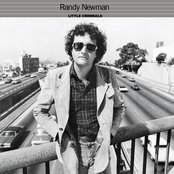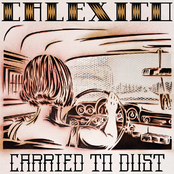Peter ‘Pedro’ Cutler, one of several readers and contributors without whom this blog would be nothing at all, has something to say, and I think we need to listen. Carefully.
There’s something disturbing him, and me, in the way some mining history is being presented. Pete, you’ll recall, has flagged up some discrepancies between events, as recorded by the press of the time, and the way those same events are related in modern day mining history books.
We all realise, I hope, that just as history is written by the victorious, historians can often spin, or love their chosen subject a little too much.
Both I and Peter would be interested in your thoughts.

A harrison redundancy note. No thank you, no goodbye. For the story of this, check the link to Andy Dennis’ story of Edward Brown, immediately below.
On yer bike… The sad story of Edward Brown
Peter asks the following:
As readers of the Blog will no doubt realise, I have developed a somewhat obsessive interest in the Harrison Dynasty. To quote from one of the publications by the Cannock Chase Mining Historical Society…
The Harrison family were once at the forefront of mining and colliery management and had participated strongly in the affairs of local justice and military life. Their mines not only changed the landscape of Brownhills Common, Wyrley Common, Landywood and South Cannock areas whilst the pits were working but also they gave employment to thousands, provided housing, a way of life and finance to the community from 1849 to 1947, some 98 years.
The questions arising from the above quote are many. For example what does ‘being at the forefront of mining and colliery management’ suggest? Certainly they knew a lot about mines as one became Chairman of the Coal Owners Association and had a residence in London, but did they really manage the Collieries or subcontract?
What kind of Justice did they mete out, and how local was it? They certainly were involved in the affairs of military life, but did they see action? How were the titles Captain and L Colonel gained?
Did they give employment? They certainly needed workers to fulfil their goals in life, but during the periods of economic ressession did they then ditch them?
Did they provide housing out of some benevolence, or for their own benefit?
Did they provide ‘a way of life and finance’ to the community?
These questions need to be addressed, not only in a search for the truth, but to suggest an alternative view for posterity. The Blog not only provides a way of doing this, but also a way for others to correct, modify and rubbish if they so wish. Over the comming months I will try to gather together information in stages to try to answer these questions.
There is one last and disturbing question arising from a school of thought that stated miners were often fatal victims of their own desire to cut corners in order to increase their wage. While shortcuts and complacency did lead to accidents, how true is this over all? Whilst the Grove Pit Disaster is recorded as being due to a naked light struck underground, how much can miners really be considered to be architects of their own fate?
Regards
Pedro

 RSS - Posts
RSS - Posts










Hi Bob
a very very interesting letter from Pedro and a topic which will captivate us all as it evolves in due course, I am sure. National Archives may give some information regarding safety legislation at the time…Mines Inspectorate from 1843 to 1920; Board of Trade, Mines department from 1920 to 1942, and Ministry of Fuel and Power from 1942 to 1957 ..but , as with all archives, readers should have a good supply of strong coffee to hand !
Thank you, Pedro…you have brought a very important issue to our attention, I feel; and, for some, an emotive issue.
regards
David
It’s interesting to note that larger colliery companies usually had brick & tile works sand quarries and gravel pits within their business so building materials were literally as cheap as dirt to them! They also had sawmills for pit props etc and so timber cut to size was of negligible cost too.
This in mind throwing up a row of small terraced houses on land you already own wouldn’t have been an overly costly affair in the scheme of things. And I assume the rents would have recouped the initial minimal outlays quite quickly and thus turning a profit for years to come not so much benevolence but further feathering ones nest.
This not in the Harrison empire, but is local enough to see the power of the Coal Companies….Lichfield Mercury 2 October 1914
Dangerous Houses…
The Great Wyrley Colliery Company applied for a number of ejectment orders against tennants of houses in New Villa Street Landywood, and Mr Anslow, a representative of the Company, stated that the houses were “mined” under, and the occupiers were advised not to spend any money in repairing them. Several of the defendants stated that they could not get a house anywhere in the district. Isaac Rogers, a miner, stated that he had two of the houses built in 1901 and he was not afraid to live in the house he now occupied.
Another defendant said that she wished she could live as long as the houses were going to stand.
Ejectment orders were made in each case, and the chairman said they were issued for the safety of the occupants, as there was evidence that they were running a risk living on them.
Pingback: A quick correction from Andy Dennis « BrownhillsBob's Brownhills Blog
Pingback: BrownhillsBob's Brownhills Blog
Pingback: The Harrison Dynasty (Part One: The Early Years,1763 to 1841) « BrownhillsBob's Brownhills Blog
Pingback: Recovered history « BrownhillsBob's Brownhills Blog
Pingback: The Harrison dynasty: Beginnings in Coal, 1849 « BrownhillsBob's Brownhills Blog
Pingback: The Harrison Family 1849-1877: Shrewd operators and social climbing | BrownhillsBob's Brownhills Blog
Pingback: Peer survey | BrownhillsBob's Brownhills Blog
The only truth you will find when delving into the past is that history propagates. You search for an answer and when you find it, several more question reveal themselves.
These ‘discrepancies’ between events, as recorded by the press of the time, and the way those same events are related in modern day mining history books, are not always a result of history written by the victorious, and or historians applying spin, or even loving their chosen subject a little too much. They are merely the way in which we as humans choose to perceive the world around us, and commit things to memory.
If history has taught me one thing, it is that, I do not believe as fact any event of the past, however recorded or presented.
I will accept any stories, documents, artefacts or any other means as a possible explanation, but the reality is we will never know for sure. While people who record the past will put spin on things, or even have hidden agendas, we have to also remember that with the best intentions, two people witnessing the same event, will have variations. You only have to listen to a couple of football supporters talking about the football they attended yesterday.
Place this into the context of events that happened 20, 30 or 40 years ago, things can get quite distorted.
It is not just historians loving their chosen subject a little too much, most none professional historians don’t trust the so called professionals, and prefer to do their own history; with some very interesting outcomes.
I recently came across an unusual object in an abandoned Victorian churchyard near to Bewdley last year. I spoke to some people from a local history group who said it was either a mortsafe, a device to protect the dead for body snatchers or the burial of a witch who had been burned at the stake.
I mentioned this the author of Victorian Ways of Death, who said it was a wreath rack, quite rare, but there are a few scattered about the country.
When I told the local history guys, they wanted me burnt at the stake! I had just destroyed their local legend, their very own witch. People are very protective about their history.
The way in which we perceive historic events is also govern by our culture, background, education and to a degree fashion and other events that shape the world around us.
When Captain Scott died attempting to reach the south pole in 1912, he was hailed as a hero; at the time, as a country we badly needed a hero. In the later 1970’s 80’ we did not need any heroes, so Scott was labelled in some books an incompetent and bigoted fool.
The fashion now is that, well maybe he ant such a bad chap after all.
So where does this all lead; I would like to think that if you wish to study history, first study the historian. You should also embrace the idea that it is ok to hold two complimentary opinions, and agree with both. So within reason, you should accept what you see, until shown otherwise; because to me, this is what makes the past so engaging.
” You should also embrace the idea that it is ok to hold two complimentary opinions, and agree with both.”
Do you mean “complementary” or “complementarity”?
I am quite willing to accept ideas like the wave-particle duality of light, but in the specific case of the concluding chapter of the CCMHS publication I am less than complimentary. In fact I regard it as cobblers!
In the above article it states…”The Blog not only provides a way of doing this, but also a way for others to correct, modify and rubbish if they so wish.” I should embrace any other specific opinion on the concluding chapter of the said publication!
Complimentary = given free as a courtesy or favour. As for complementarity, the fundamental principles of quantum mechanics, is I am sorry to say not the first item on my reading list
In the same token neither is the concluding chapter of the CCMHS publication. To me this is just the view of the authors Cannock Chase Mining Historical Society who for whatever reason wrote this as their version of past events.
I don’t think you should I should embrace the ‘specific opinion’ that it is cobblers, that’s almost doing yourself a disservice. If I pick up on the title of this post ‘In pursuit of the truth’, then calling it cobblers is not making your view of their version of events true.
We will never know the truth, so therefore we cannot correct it, only modify it; at least until someone else comes along and….
Hi.
I don’t think you’re being quite fair here, and I also think you’re missing the point somewhat.
I’m not a qualified historian. I doubt Pedro is, either. However, I’ve been writing this blog now for coming up for four years, and as I trawled through accepted local history and lore, I discovered much of it was not, by any stretch, correct.
One only has to look at Stonnall’s bizarre attachment to Dick Turpin legends to see folklore, and desire reinforcement of it, at work. That’s not bad, it’s normal. The art is spotting it.
I discovered that local history books – whilst filled with fascinating photos and anecdotes, can’t automatically be trusted, and indeed, many contain glaring errors.
I learned also that what you say about truth, and the recording of history, and about different viewpoints. Lots of my post titles allude to that ‘This is my truth, tell me yours’, ‘This much we know’ etc.
I know too that newspaper journalism isn’t accurate, and I think that most, though certainly not all, contributors to this pile understand that anecdote isn’t evidence, and that we need to be careful in stating what is fact and what isn’t.
I wrote a piece about this when I found I’d jumped to a conclusion, and also when I was troubled by the behaviour of another local history enthusiast who seems to have a somewhat flexible approach to what constitutes proof.
http://brownhillsbob.com/?s=echoes
The concept of myth has always fascinated me, and being a data wonk in real life I know never to use absolutes. I’m very wary of the null hypothesis,and particularly confirmation bias.
Pedro has gone into the Harrison thing pathologically, and found that his truth differs significantly from that of the CCMHS. I think that’s interesting in itself. I think there’s significant evidence that the Harrison clan weren’t quite the benevolent, charming folk they were portrayed to be. Pedro knows, as do I, that this may not be the case. To this end, I post the work here, in a public forum, and let anyone contribute.
You see, what I’ve found is that what’s in the article is not the whole meal, it’s a starter, or a stimulant laden aperitif, that often starts a fascinating cascade of discussion, often heavily polarised. That the discussion is recorded, and open to peruse for others involved or interested, is what’s important.
Neither I, not Pedro, nor David or any of the other contributors here trade in absolutes. I am an absolute stickler for it, as they will tell you, often to an irritating degree. be we do trade in what’s available, or what we can find. That which would have stayed hidden in archives or forgotten books is presented, for all to read and form an opinion thereon.
It’s a bit too Orwellian to suggest in believing contrary things at the same time; you may think it’s open minded, but I would counter that it’s actually fear of making any kind of decision. I can believe something quite readily – and I have to say, on the Harrisons, I’m with Pedro – but that doesn’t mean I’m not open minded to change that. My opinion on so much stuff has changed over the course of this that I spin like a weathervane.
The important thing is the conversation, the public discourse, and openness of it.
if that’s there, I think we can all form out own opinions.
Biased? Of course I am. So are you. We all are.
Best wishes
Bob
Hi, firstly please may I apologise if I have come across as sounding unfair, I did not intend to cause any offence, I only wanted to join in with the discussion and make a contribution.
Unfortunately I read quite slowly, and became a little too focused on the ‘In pursuit of the truth’ heading, before reading the rest of the links. What I was trying to do, perhaps not very well, is to help us none professional historians (me included) to really enjoy history, and the past in.
I have always liked history, which for someone who was kicked off doing a CSE in history at secondary school, maybe says a lot. However what changed my like for history into a real pleasure, was grasping an understanding of the mechanisms how the past is recorded and remembered.
I have to say that what has been written here is seriously good reading, and getting as close as we can to how life really was in this area is something that I wish to understand more.
Again please accept my sincerest apologies.
Please, don’t apologise. You’re welcome, and it’s all part of the conversation.
I’m finding what you’re doing with Sandfields fascinating, and your approach is welcome and interesting. For a really mad approach, check out the sadly now dormant ‘Tamworth Time Hikes’ – that was mental /and/ brilliant. Mark, we miss you…
What I’m saying is we’re all part of the conversation, and you’re a welcome new piece of the patchwork of local history buffs writing locally, and what you’re doing compliments (um?) Lichfield Lore, what I do, and I think Staffordshire Bred beautifully.
If rumour is to be believed, the latter is also writing something about the Harrison clan. But from a different place entirely.
All I say, is keep talking. By talking, we illuminate, and discover. And it makes me feel less of a sad git at 2:30am.
Cheers
Bob
Cheers 😉
I should offer an apology to David for picking up on one point in a comment that dealt with a general concept “in the pursuit for Truth”, and with a which I would generally agree; after all it is no use laying yourself open to critism and then not being able to take it. David’s Blog had been highlighted by Bob, I have visited and really enjoyed. David mentions “Public History” of which I believe his Blog and Bob’s are great examples.
But this specific example, being the concluding chapter and opinion in a publication, can be used as an indication of the way that an opinion, unchallenged, could lead to a distorted view. Calling the opinion “cobblers” may seem to be provocative and disrespectful to the holders of an alternative view, but I am making no apologies for that. Let me explain…
My interest in the Harrison family started way back with a post by Andy and titled “How to solve a problem like Eliza”. It seemed that there was a lack of information about the family in comparison to other coal interests in the area. What better place to start than the only publication concerning the family, being William Harrison Co Ltd by a Mining History Society. This is an excellent account of mining from the engineering sense, but it soon became apparent that there were several mistakes, a major one being the account of the pit disaster in 1861.
I mailed the Society with the view that the account should be changed for future editions. I feel that I owe it to these Dead Souls to point out that the accident was not an “act of God” but a consequence of their working conditions. After several weeks I recieved a reply, to which our Bob is privy, being briefly… You don’t come from the area, you are not of a mining background, this publication was checked by people with letters after their name. But to my utter amazement was the statement that miners were in general victims of their desire to cut corners in order to increase their wage.
I must thank Bob for providing the platform to add information that may be used to form a more balanced opinion.
Again, please don’t apologise, reading the response from the Mining History Society, I would feel a little frustrated too. I think it’s an unfortunate thing when people get so protective about their history that they produce, to the exclusion of fair comment, question and opinion.
I wish you well with your research into this
Regards
Dave
Pingback: BrownhillsBob's Brownhills Blog
Pingback: Burntwood Mining Memorial – unveiling tomorrow! | BrownhillsBob's Brownhills Blog
Pingback: An electoral deformity | BrownhillsBob's Brownhills Blog
Pingback: Safe as houses? | BrownhillsBob's Brownhills Blog
Pingback: Believed to have been a good man… | BrownhillsBob's Brownhills Blog
Pingback: Diamonds and dust | BrownhillsBob's Brownhills Blog
Pingback: Arachnofoolya | BrownhillsBob's Brownhills Blog
“The Harrison family were once at the forefront of mining and colliery management and had participated strongly in the affairs of local justice and military life.
.DEC 1863…AT RUSHALL PETTY SESSIONS…BEFORE W HARRISON ESQS AND ALSO INC JE BEALEY…William Nutting charged with stealing a quantity of potatoes…he said he fetched the potatoes, about 29 pounds as he had no food in the house. The man had a large family and had been out of employment for some time…sentenced to one months imprisonment with hard labour